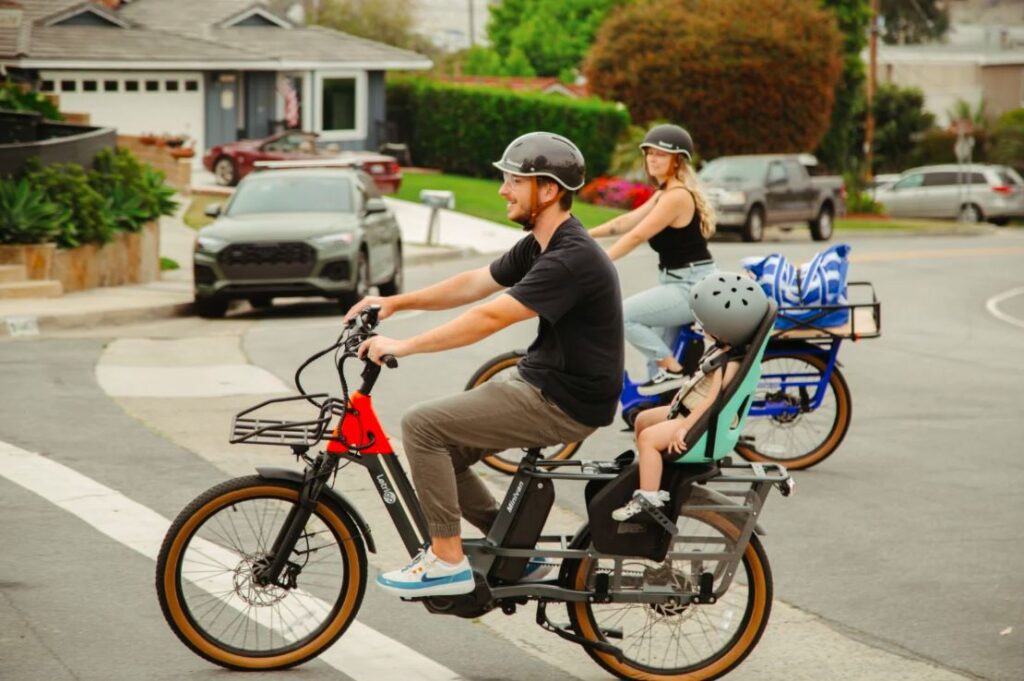Navigating the New Rules for Sustainable Mobility
Electric bicycles, commonly known as e-bikes, have transformed urban transportation, offering an eco-friendly, efficient, and accessible alternative to traditional vehicles. As cities worldwide grapple with traffic congestion, air pollution, and the push for sustainable mobility, e-bike regulations in urban areas 2025 are evolving to balance safety, accessibility, and environmental benefits. This article explores the latest regulatory frameworks, their implications for urban riders, and how cities are adapting to the e-bike boom. With a focus on key regulations, safety standards, and infrastructure development, we’ll dive into what urban dwellers need to know to ride legally and safely in 2025.
The Rise of E-Bikes in Urban Environments
E-bikes have surged in popularity due to their ability to cover longer distances with less physical effort compared to traditional bicycles, making them ideal for urban commuting. In 2025, cities like New York, London, and Beijing are seeing millions of e-bikes on their streets, driven by both individual owners and shared mobility programs. For instance, China alone reported over 200 million registered e-bikes by 2022, a number that continues to grow. This growth has prompted governments to refine e-bike regulations in urban areas 2025 to address safety, infrastructure, and environmental concerns.
Why E-Bikes Matter for Urban Mobility
E-bikes are a cornerstone of sustainable urban transport. They produce zero emissions, reduce traffic congestion, and offer a cost-effective alternative to cars and public transit. In dense urban areas, e-bikes are particularly valuable for last-mile delivery and short commutes, minimizing the reliance on fossil fuel-powered vehicles. However, their integration into crowded city streets requires clear regulations to ensure safety for riders, pedestrians, and other road users.

Challenges Driving Regulatory Changes
The rapid adoption of e-bikes has brought challenges, including safety risks due to higher speeds, potential conflicts with pedestrians, and the need for adequate infrastructure. E-bike regulations in urban areas 2025 aim to address these issues by setting standards for speed, power, and usage zones. For example, the varying speed capabilities of e-bikes—some reaching up to 28 mph (45 km/h) in certain regions—have necessitated stricter rules to prevent accidents in shared spaces.
Global Overview of E-Bike Regulations in 2025
United States: A Three-Class System
In the United States, e-bike regulations are primarily governed at the state level, with a federal framework providing guidance. The federal definition classifies e-bikes as low-speed electric bicycles with fully operable pedals, a motor of less than 750 watts, and a maximum speed of 20 mph (32 km/h). Most states have adopted a three-class system:
-
Class 1: Pedal-assist only, with a maximum speed of 20 mph.
-
Class 2: Throttle-assisted, also capped at 20 mph.
-
Class 3: Pedal-assist only, with a maximum speed of 28 mph.
In urban areas like New York City, additional local rules apply. In 2025, New York City introduced a 15 mph speed limit for e-bikes and e-scooters to enhance safety on crowded streets. The city also established the Department of Sustainable Delivery within the Department of Transportation to regulate e-bikes, particularly for delivery services. Learn more from NYC DOT’s e-bike regulations.
European Union: Harmonized Standards
The European Union (EU) has one of the most unified regulatory frameworks for e-bikes, governed by Directive 2002/24/EC. In 2025, e-bike regulations in urban areas 2025 in the EU limit e-bikes to a motor power of 250 watts and a maximum assisted speed of 25 km/h (15.5 mph). These are classified as Electrically Assisted Pedal Cycles (EAPCs), which don’t require licensing, insurance, or registration, making them accessible for urban commuters.
However, speed pedelecs—e-bikes with motors exceeding 250 watts or speeds above 25 km/h—are treated as motor vehicles, requiring registration and licensing. In cities like Amsterdam and Copenhagen, where cycling infrastructure is robust, these regulations are complemented by extensive bike lanes and low-emission zones (LEZs) that encourage e-bike use.
United Kingdom: Post-Brexit Rules
Post-Brexit, the UK maintains similar standards to the EU, with EAPCs limited to 250 watts and 15.5 mph. In 2025, the UK is exploring changes to e-bike regulations in urban areas 2025, particularly for e-cargo bikes, which could see increased power limits to support heavier loads for urban deliveries. These changes aim to align with the government’s active travel goals, backed by a £3 billion investment in cycling infrastructure by 2025. For official updates, visit GOV.UK’s guidance on e-bikes.
Asia: Strict Regulations for Dense Cities
In Asia, particularly in China, e-bikes are a dominant mode of transport, with over 325 million in use by 2021. Urban areas like Beijing and Tianjin enforce strict e-bike regulations in urban areas 2025, including registration requirements and designated lanes to manage high traffic volumes. Dense cities prioritize safety due to crowded streets, often limiting e-bike speeds and requiring helmets. These regulations reflect a utilitarian approach, viewing e-bikes as essential for commuting and delivery rather than recreation.
Safety Standards and Urban Challenges
Helmet and Equipment Requirements
Many urban areas now mandate helmets for e-bike riders, especially for Class 3 e-bikes in the US or speed pedelecs in the EU. Reflective gear, lights, and bells are also commonly required to enhance visibility in busy cities. For example, New York City’s regulations emphasize visible labeling and safety equipment for delivery e-bikes to reduce accidents.
Infrastructure and Shared Spaces
Adequate infrastructure is critical for safe e-bike integration. Cities like Copenhagen and Rio de Janeiro are investing in dedicated bike lanes and low-emission zones to accommodate e-bikes. However, shared spaces with pedestrians remain a challenge. Regulations often restrict e-bikes from pedestrian-heavy areas or limit their speed in mixed-use zones to prevent conflicts.
Environmental and Social Benefits
E-bikes offer significant environmental benefits, making them a key component of urban sustainability strategies. By replacing car trips, e-bikes reduce greenhouse gas emissions and air pollution. Their lithium-ion batteries, while requiring careful disposal, have a lower environmental impact than car batteries and are recyclable.
Accessibility and Equity
E-bikes make cycling accessible to a broader demographic, including older adults and those with mobility impairments. In the UK, proposed regulatory changes aim to enhance e-bike accessibility, supporting the government’s active travel objectives. In Brazil, e-bikes are being integrated into low-emission zones to promote equitable access to sustainable transport.
Economic Impacts
E-bikes are cost-effective for both individuals and cities. They reduce the need for expensive parking infrastructure and lower commuting costs compared to cars. E-cargo bikes, increasingly used for urban deliveries, also support economic efficiency by reducing reliance on larger, more polluting vehicles.
Challenges and Future Directions
Despite their benefits, e-bikes face regulatory challenges. Inconsistent rules across jurisdictions can confuse riders, especially international travelers. For instance, a US Class 3 e-bike may not comply with EU standards, complicating cross-border use. Additionally, the rise of e-bike sharing systems has led to supply-demand imbalances, requiring cities to optimize station placement and fleet management.
Emerging Trends in 2025
In 2025, cities are exploring innovative solutions to enhance e-bike integration:
-
Smart Infrastructure: Cities like Dublin are using data-driven approaches to optimize e-bike sharing systems, improving eco-efficiency and ridership.
-
Policy Harmonization: Efforts are underway to standardize regulations globally, reducing compliance issues for manufacturers and riders.
-
Safety Innovations: Advances in e-bike design, such as improved braking systems and speed limiters, are being incorporated into regulations to enhance safety.
Recommendations for Urban Planners
Urban planners should prioritize:
-
Expanding dedicated bike lanes to accommodate e-bikes.
-
Implementing clear signage and speed limits in shared spaces.
-
Supporting e-bike sharing programs with strategic station placement.
-
Engaging stakeholders through public consultations to balance safety and innovation.
Conclusion
E-bike regulations in urban areas 2025 are shaping the future of urban mobility by promoting safety, sustainability, and accessibility. From the US’s three-class system to the EU’s harmonized standards and Asia’s strict safety rules, cities are adapting to the e-bike revolution with tailored policies. As e-bikes continue to transform urban transport, ongoing investment in infrastructure, clear regulations, and public education will be crucial to maximizing their benefits while minimizing risks.



